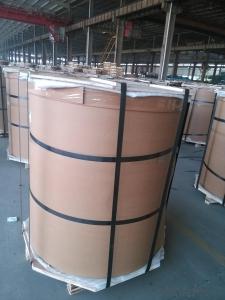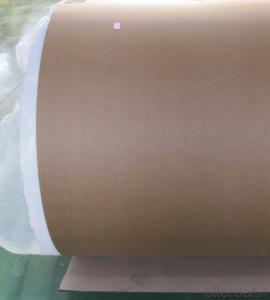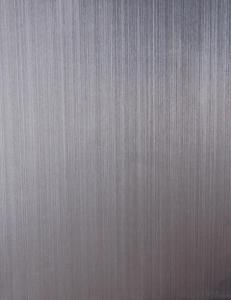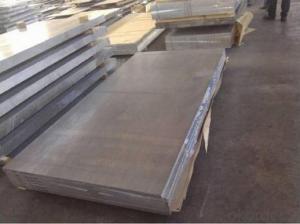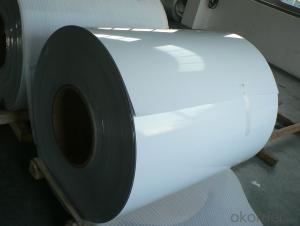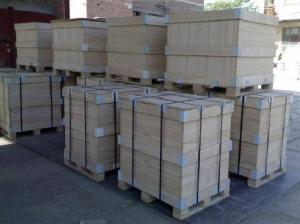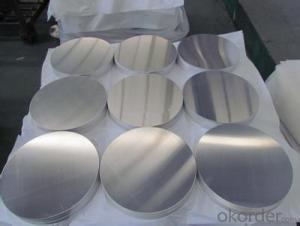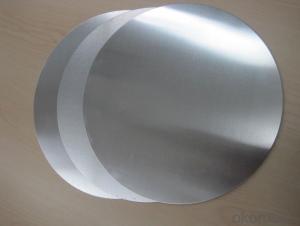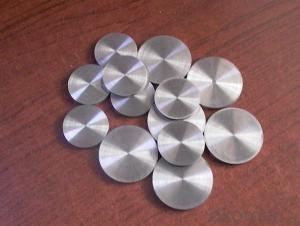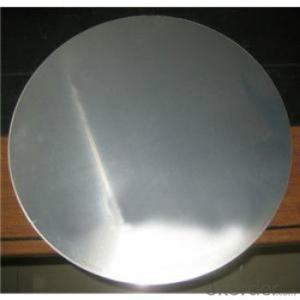Carport Purlins and Aluminum Sheets for Cutting Circles with Cookware
- Loading Port:
- Shanghai
- Payment Terms:
- TT OR LC
- Min Order Qty:
- 5 m.t.
- Supply Capability:
- 5000 m.t./month
OKorder Service Pledge
OKorder Financial Service
You Might Also Like
Specification
1.Structure of Aluminium Coils for Cutting Circle with Cookware
Aluminium Coils for Cutting Circle with Cookware is one semi-finished aluminium material. This strip can be rolled down to aluminium coil,sheet,circle ect. The alloy AA1050 is widly used in building, industry ect. Its weight is much lower than steel. So many customers choosed aluminium material instead of steel.
2. Main features of Aluminium Coils for Cutting Circle with Cookware
a.Competitive price---We have our own mills and can produce mill finished aluminium coils, so we can control the production cost better.
b.Professional after-sale service---We have more than 15 years exportation experience and you need not worry about the exporation problems.
c.Fast delivery time---We can control the delivery time within 35 days.
3. Image
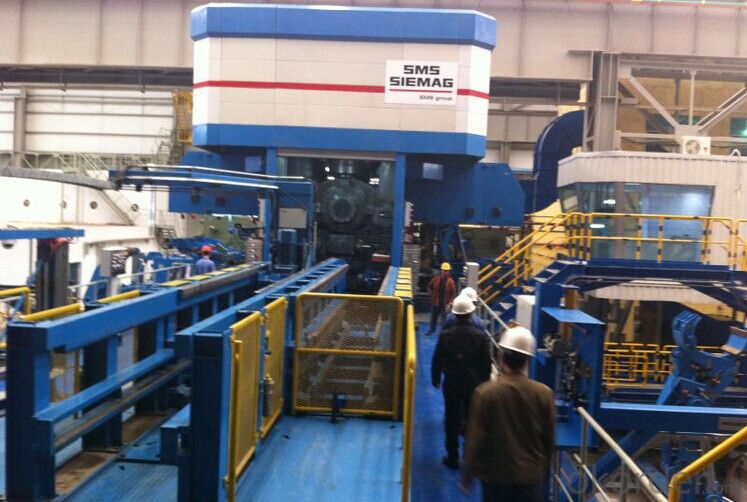
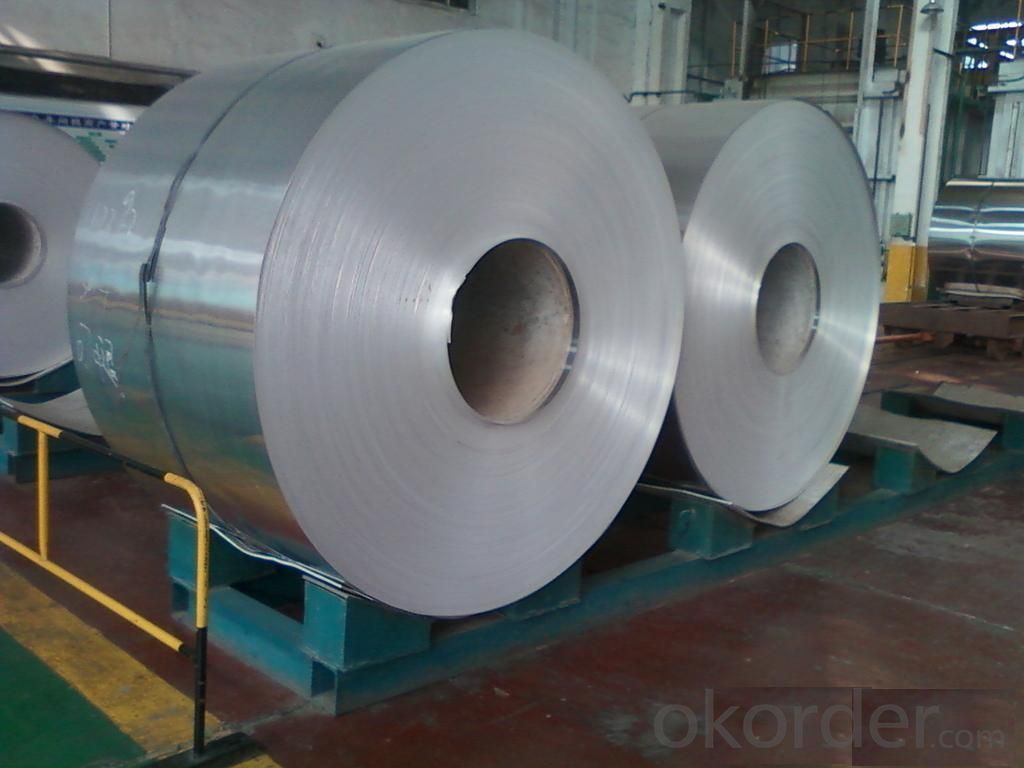

4. Product Specification
| ALLOY | TEMPER | COATING | ROLLING | THICKNESS |
| AA3003 | H14 | WITHOUT | SPINNING | 0.2MM-2MM |
5.FAQ:
What is the quality standard?
---Usually our standard is GB3880-2006
What is the largest width?
---It is 2300mm
What is the MOQ?
---Usually we can accept 80 tons.
- Q: Are the aluminum sheets suitable for manufacturing kitchen utensils?
- Indeed, aluminum sheets prove to be exceptionally well-suited for the production of kitchen utensils. Boasting a lightweight and enduring composition, aluminum exhibits remarkable heat dispersal qualities. Its resistance to corrosion renders it an ideal choice for direct contact with food and liquids. Furthermore, its non-reactive nature ensures that no detrimental substances permeate the cooked or stored items. The ease with which it can be cleansed and maintained only adds to its appeal, thus cementing its popularity among kitchen utensil enthusiasts. All in all, aluminum sheets emerge as a dependable and productive alternative for fabricating an extensive variety of kitchen utensils.
- Q: Can aluminum sheets be used for electrical applications?
- Yes, aluminum sheets can be used for electrical applications. Aluminum is a highly conductive material, with nearly 60% of the electrical conductivity of copper. This makes it suitable for various electrical applications such as wiring, bus bars, transformers, and electrical panels. Aluminum sheets are commonly used in the construction of electrical enclosures and housings due to their lightweight and corrosion-resistant properties. Additionally, aluminum is cost-effective compared to other metals like copper, making it a popular choice in many electrical applications.
- Q: What are the standards and certifications available for aluminum sheets?
- There are several standards and certifications available for aluminum sheets, ensuring their quality and compliance with industry requirements. Some of the commonly recognized ones include: 1. ASTM International Standards: The American Society for Testing and Materials (ASTM) has developed a range of standards specifically for aluminum and aluminum alloys. These standards cover various aspects such as chemical composition, mechanical properties, and dimensional tolerances, ensuring consistent quality across different aluminum sheet products. 2. ISO 9001: The ISO 9001 certification is a globally recognized standard for quality management systems. Aluminum sheet manufacturers that are ISO 9001 certified have demonstrated their commitment to meeting customer requirements, continuous improvement, and adherence to strict quality control processes. 3. ASME Standards: The American Society of Mechanical Engineers (ASME) has established specific standards for aluminum sheet materials used in pressure vessels, piping, and other applications. These standards ensure the safety and reliability of aluminum sheets in critical applications. 4. MIL-Specifications: The United States Department of Defense (DoD) has developed military specifications (MIL-Specs) for various materials, including aluminum sheets. These specifications define the requirements for military-grade aluminum sheets, ensuring their suitability for specific defense applications. 5. EN Standards: The European Committee for Standardization (CEN) has developed a series of European Norm (EN) standards for aluminum and aluminum alloys. These standards cover various aspects such as chemical composition, mechanical properties, and surface finishes, ensuring compatibility and consistency across the European market. 6. RoHS Compliance: Restriction of Hazardous Substances (RoHS) compliance is crucial for aluminum sheets used in electrical and electronic equipment. This certification ensures that the aluminum sheets do not contain hazardous substances such as lead, mercury, cadmium, and certain flame retardants, thus guaranteeing their environmental safety. It is important for manufacturers and suppliers of aluminum sheets to comply with these standards and certifications to ensure the highest quality, safety, and suitability of their products for specific applications.
- Q: Can aluminum sheets be used for roof flashing?
- Yes, aluminum sheets can be used for roof flashing. Aluminum is a popular choice for roof flashing due to its durability, corrosion resistance, and lightweight properties. It provides a reliable barrier against water penetration and helps to redirect water away from vulnerable areas on the roof, such as valleys and chimneys. Additionally, aluminum flashing is relatively easy to install and maintain, making it a practical choice for roof flashing purposes.
- Q: Can aluminum sheet be used for heat exchangers?
- Indeed, aluminum sheet can be effectively utilized in heat exchangers. The utilization of aluminum as a material for heat exchangers is widespread owing to its remarkable thermal conductivity, lightweight nature, and resistance to corrosion. The remarkable thermal conductivity of aluminum facilitates the efficient transfer of heat between fluids, rendering it suitable for a multitude of heat exchange applications. Furthermore, aluminum is obtainable in diverse alloys and thicknesses, granting adaptability in design and customization to cater to specific heat exchanger prerequisites. On the whole, aluminum sheet emerges as a favored option for heat exchangers in industries encompassing automotive, HVAC, and aerospace.
- Q: How are the aluminum plates cut?
- A little thick with shears or plasma cutting machine, cutting machine words cut out if more smooth, no burr, but the pattern is simple, can be arbitrary cutting plasma cutting machine, but cutting burrs, rough.
- Q: I am looking at buying a used 1983-84 Eldorado but have read some things about the reliability of the aluminum engine. Any thoughts? Thanks.
- aluminum engines are used to save weight and help increase horsepower, I don't think that making an engine from aluminum is a bad thing, the biggest problem is making sure you NEVER EVER OVERHEAT IT. They use steel sleeves in the piston bores and other critical high stress areas, but the biggest problem is once overheated its done, vaporized aluminum is actually very explosive too, Any Eldorado's still around from 84 now, I think has a good engine in it. another potential problem is spark plug removal and installation, using an anti seize is recommended. If you do find an Eldorado's now, someone may have installed a iron block in it anyway, because one thing aluminum motors are known for, is being very expensive.
- Q: What is the lifespan of the aluminum sheets?
- The durability and longevity of aluminum sheets can differ due to various factors, including the aluminum's quality, the usage environment, and the level of maintenance provided. Despite this, aluminum sheets are renowned for their long-lasting nature. On average, these sheets endure for approximately 20 to 30 years, but by ensuring proper care and maintenance, their lifespan can surpass this estimate. To extend the longevity of aluminum sheets, it is beneficial to regularly clean them, shield them from severe weather conditions, and prevent exposure to corrosive substances.
- Q: What is the melting point of 101 aluminum sheets?
- Approximately 660 degrees Celsius or 1220 degrees Fahrenheit is the melting point of 101 aluminum sheets.
- Q: I am engaged in line cutting, because the cut aluminum plate conductive block wear more fierce, molybdenum wire is often broken card, I do not know that heroes have unique skills, say, we share. Thanks.
- The contact position between the conductive block and the electrode wire is often changed
Send your message to us
Carport Purlins and Aluminum Sheets for Cutting Circles with Cookware
- Loading Port:
- Shanghai
- Payment Terms:
- TT OR LC
- Min Order Qty:
- 5 m.t.
- Supply Capability:
- 5000 m.t./month
OKorder Service Pledge
OKorder Financial Service
Similar products
Hot products
Hot Searches
Related keywords
